| |
 |
|
| |
 |
|
|
A personal
history of Port Morris, New Jersey by Sal Valentino. -
Editor's Note: In July 2004 we received a note from Sal
Valentino offering to sketch out his memories of growing
up in Port Morris. Here, with only slight editing to weave
the parts together, is his never before published account,
along with Sal's family photos and images from our own
main Port Morris history page. |
|
PORT
MORRIS, NEW JERSEY HISTORY AS I LIVED IT The generation I belong to
is very fortunate in living through a lifetime of such
astounding technical developments. We went from horse and
buggies, steam engines, and Model T Fords to high speed
computers and going to the Moon. No generation in the past
has witnessed these dramatic changes and I doubt any will
in the future. Yes we'll have better cars, better planes,
faster and smaller computers etc., but nothing like we
experienced. So I am happy to use my computer and share
the humbler and simpler times during my youth living in
Port Morris, New Jersey, a small and historic town of
1,000 people which gave me such profound memories. |
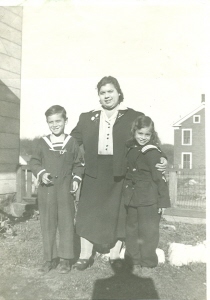 The author, Sal Valentino is at left, in his "Navy" uniform, mom Isabel Valentino and sister Isabel, circa 1942, in front of their Port Morris home. |
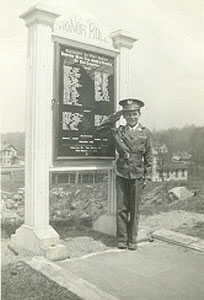 Sal Valentino in his "Army" uniform, circa 1943. This HONOR ROLL stood on Center St and read: "Residents of Port Morris Serving In The Armed Forces of Our Country". The top group is Army, Navy next and then the Marines |
|
| WORLD WAR II Next to our home on Center Street, alongside where the Port Morris Hotel was before being destroyed by fire in the 1930's, an Honor Roll (see photo above) was built to honor all those who served during World War II. For years I took care of this monument including cutting the lawn in front of it. One day during a very bad storm it blew down and was destroyed. The words on top were: "Residents of Port Morris Serving In The Armed Forces of Our Country". The top group is Army, the next Navy and then the Marines. The photo above shows me posing proudly in my (junior) Army uniform around 1943, standing next to the Honor Roll. The sidewalk in the foreground of the Honor Roll was the entrance to the hotel and in the rear are the remains after the fire. During the War many from town worked at nearby munitions plants Hercules Powder Company in Kenvil, New Jersey and Picatinny Arsenal in Rockaway, NJ. They had 3 eight hour shifts 24 hours a day, 7 days a week and buses from these facilities would take employees to work. During one period both my parents worked in Picatinny in the war effort and often at night. My older siblings would care for us but if something went wrong we went across the street to Mr.& Mrs. Smith for help. They were ministers at the Port Morris Methodist Church, the only Church in town. On September 12, 1940 the Hercules plant blew up with a horrendous explosion that killed 49, injured 200 and rocked Port Morris causing many of the windows in my school to break. The German Bund was active in America at the time and were suspected of sabotage (Editor: The eventual death toll was 51, no official cause of the blast was ever determined but evidence pointed to an industrial accident). One of the injured was my brother Anthony who was blown 50 feet into the air and landed on a hot bed of ashes with fire all around him. He thought he was dying and called out for help from our sister Dolly who had passed away the previous year, 1939. Suddenly he saw an opening in the fire and crawled through. He suffered burns to his face and elbow and had permanent damage to his ear. His picture (below) being led away from the fire covered the whole front page of The New York Daily News on September 13, 1940. At age 5 my first memory in life was seeing him looking out the window of Dover General Hospital with his face all covered with white bandages. During the war over 72 men from Port Morris served in our Armed Forces, 49 in the Army, Navy 20 and Marines 3. One Navy man was killed, Donald LaRue who lived on Washington Street. Our Valentino family had 2 serve during the war, Ralph as a Marine and Vic in the Navy. Vic was in the Marshall Islands, South Pacific and was present near Enewitok when an atomic bomb was exploded there as a test. We often kidded him that when he left home his hair was straight and upon return it was kinky, we thought from the bomb fallout! Brother Joseph served in the Air Force after the war and I served in the Army 1953-1954 just as the Korean War ended. I was sent to Germany for 2 years and was stationed on the East-West border monitoring the Russians. So the Valentino family (see photo below) had servicemen in the Army, Air Force, Navy and Marines! The only brother who couldn't serve was Anthony because of injuries suffered in the Hercules explosion. |
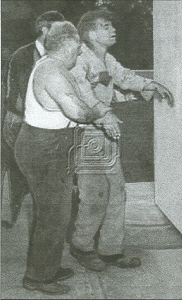 Anthony Valentino, injured in the Hercules Explosion, 1940 |
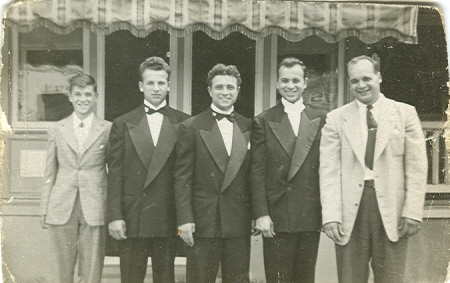 The Valentino Brothers, from left: Sal, Joseph, Vic, Ralph, Anthony |
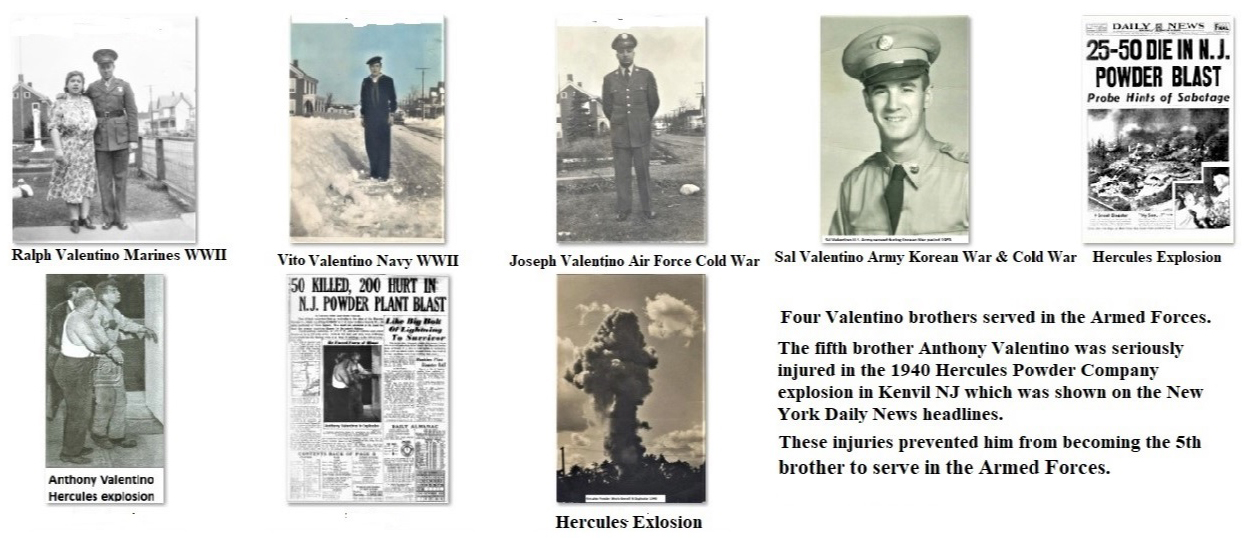
| During World War II the rail
yard at Port Morris was often filled with war equipment and
soldiers, destined for ports and embarkation overseas and as
young children we were fascinated to watch it all. Often I rode on the old town fire truck while we went around town collecting pots, pans, scrap metal, etc. for the war effort and we piled these in large heaps near the firehouse. Most important items were rationed like gas, tires, butter and yes even bubble gum. We had parades during the 1940's, especially on Memorial Day as shown below. Please note the cars were all 1930's vintage, none were made in America during the war since production was solely for military equipment. These pictures were taken while standing in front of our home on Center street. |
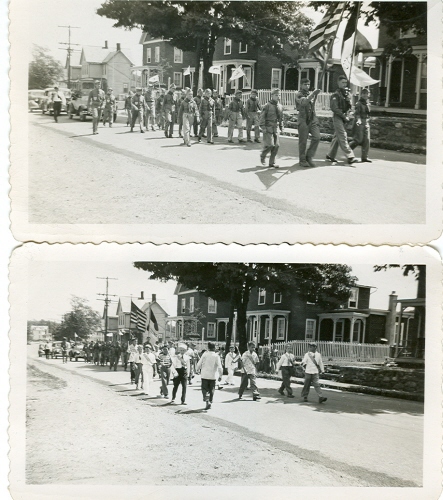 Memorial Day Parade in Port Morris, circa 1944. |
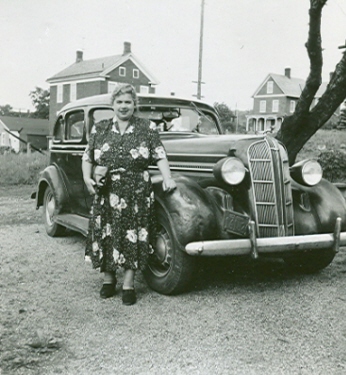 Mrs. Isabel Valentino and the family 1937 Dodge. |
| A little river called the Musconetcong ran between Lake Hopatcong and Lake Musconetcong through Port Morris. One place on it was a favorite swimming hole called The Deep Hole where we built a little platform made of railroad ties which enabled us to dive into the river and swim. Usually after a day of work on the railroad we went there to rid ourselves of grime. Since our town was located on Lake Musconetcong we had a small park area on the lake where we could swim, boat, fish, ice fish in the winter and ice skate. Next to this area was a large stone ice house. During the winter after the lake froze, (in the early days) large blocks of ice would be cut and stored here to be used through the spring and summer. This was before my time though, only the walls were left when I lived there since electric refrigeration had been invented. |
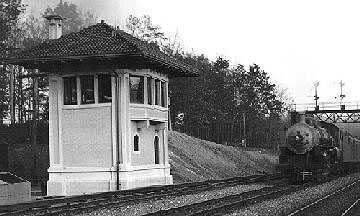 Lackawanna Railroad Train Tower at the Port Morris NJ yard, circa 1935-1955. |
Steam Engine in front of the Port Morris NJ roundhouse, circa 1940 |
| The canal operated
before my time but I do remember everything about the rail
yard, which was very big. It served as a steam engine repair
facility and also long trains of cars were created there and
sent all over the country. As carloads came to Port Morris
they would be divided up by common destination and sent to
these new places. Steam engines would be replenished with water and coal to run on before leaving on a trip. The fire boxes were cleaned there and each day as a result, huge plumes of black smoke would cascade all over town and we called these blackouts. Families would run to their clotheslines and remove washed clothing which was hanging to dry. Many in town, including myself would go to the railyard at night and gather coal which spilled from the coal chutes that were filling the engines. Everyone in town had coal furnaces when I was a young boy through the 1940's.The yard also had a cattle pen, used to hold cattle which were removed from trains that had to stay in the yard a few days. They were watered and fed. As a child we would go watch them. In the photo below, this engine is backing onto the turntable in Port Morris to be turned around and headed in the opposite direction. |
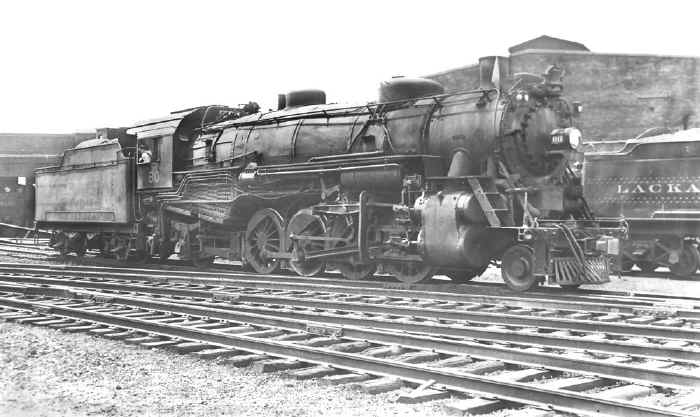
The L&HR No. 80 (Lehigh & Hudson
River Line) Steam Engine being backed up onto
the turntable at Port Morris, NJ, 1939.
Remains of the Port Morris Roundhouse, 1963 |
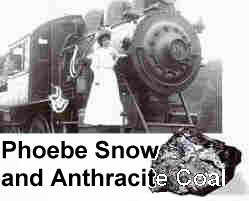 Phoebe Snow Train Ad |
|
Another time we were working out on the Cut Off near Andover. Incidentally it was called this because the old line went through Netcong, Washington NJ, Phillipsburg and was single track, whereas the new line was a "cut off" of the distance to Buffalo and went from Port Morris through Andover, Blairstown, Columbia and was a double track. To maintain a level straight grade many hills were cut down and the dirt and rocks were used to create very high roadbeds between the hills, some were almost 1000 feet high and I remember the view was spectacular. There were some tunnels, one was the Roseville Tunnel near Andover the site of a train wreck which was before my time. While on one of these high road beds we were going to dump car loads of old ties from cars which tipped sideways causing the ties to tumble down the embankment. However, ties in one car jammed and wouldn't roll off so someone had to get in the car and try to untangle them. Well, that was me so as I was prying them loose with a long bar, they suddenly began to move and I went over the side with them. I jumped for my life and fortunately the embankment was made of cinders so my landing was soft and I immediately scrambled to get out of the way as the ties went roaring past missing me by 4 feet. Railroading was dangerous and tough work. The high embankments pictured below are where this accident occurred.
There was
another incident on the Cut Off while we were pulling some
old ties and replacing them on the main line. We were told
to move off the track onto a small siding next to the main
line because a freight train was due to pass. As we waited
on the siding I looked off in the distance and saw the
train coming thinking nothing of it. The train's whistle
give 4 blasts and again I thought nothing of it. Suddenly
I noticed the engine veer off the main track onto the
siding where were standing, heading directly toward us. I
saw sparks flying from the locked brakes of 100 freight
cars traveling at 60 MPH. By the time the train reached us
it was coming to a stop and the engineer jumped out and
came running back screaming "who threw the switch to put
me onto this siding?"
Railway Gandy Dancers |
|
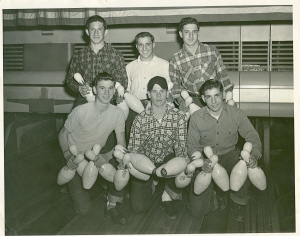 |
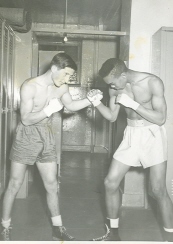 |
|
| Many teenagers from
town first worked as caddies at the Hopatcong Golf Course
which was located about 1 mile past the Hopatcong State
Park. The course eventually closed and homes were built on
the site. We also worked at the Fairways Bowling Alley
located next to the golf course (see photo above, I'm on
lower left) setting up pins. Eventually this too closed.
(Editor: The 'Fairways' Bowling Alley burned down in 1961,
several years later a restaurant was built on the site, in
2005 that building was torn down and a convenience store
constructed on the site) Pin setting is gone since
this is now done automatically by machines. In the photo
are: Upper row, left to right: Steve Guerriero, Cappy Olivo,
Frank Guerriero. Lower row, left to right: Sal
Valentino, Warren "Dent" Allen, Vito Mauriello (possibly
Vito Amato). Photo taken around 1950.Often we would hitch
hike to these places and if we couldn't get a ride, walked
the whole distance of several miles. During summers some
worked on the railroad as I did. Steve Guerriero later fought in the Golden Gloves as seen in the photo above. Sadly, while ice skating across Lake Musconetcong at night to go to the movies in Netcong on the other side of the lake, Cappy Olivo's brother Bill Olivo was drowned when he fell through the ice. His friend Milton Neal, skating with him tried to help but couldn't so he skated as fast as he could for help but by the time firemen arrived with boats it was too late. They shouldn't have been skating at night but kids are kids. The town was very saddened by this tragic accident. My father was a mason and I often worked with him around Lake Hopatcong where we repaired and built concrete docks etc. which still exist today. He had a 1929 Ford truck similar to the one in the photo above. |
The Silvio De Marino 'Confectionery Store', circa 1940, one of almost a dozen stores in Port Morris at that time. The rise of large shopping centers in nearby communities closed most by the 1980's. |
Blackwell's Hotel on the Morris Canal in Port Morris, circa 1890-1895 |
| I remember Blackwell's, (see
photo above) we used to go there for a hamburger and french
fries when I was a kid. Some distance to the right of this
place was a little store owned by my grandparents Vito and
Grace Casella who lived in their home next door. Years later
my aunt Grace Pires Emery (Nellie) made a little restaurant
here and catered to the railroad workers. The railroad yard
was across the canal which was filled in and became Canal
Street. De Marino 'Confectionery Store' (see photo above) was run by Silvio De Marino. I don't know the street number of De Marino's store but our home (Joseph and Isabel Valentino and family) was the 2nd home from the store and our number was 268 Center street. During the 30's there was a Post Office across the street from the store, then it closed and was transferred into the home of Dorothy and Roosevelt De Marino which was 2 homes down the street from the store. Silvio De Marino who owned the store was related to them. Everyone went to the P.O. to get their mail where we each had a mailbox with a combination lock. If we had other postal business we often would have to call through the little window into the home of the De Marinos and someone would come and help us. Although mail was not delivered each home still had a number. Silvio also had the job of walking up to the rail yard once a day and as the steam train went by would either stop or throw off a bag of mail for the town. He would then carry this over his shoulder down to the P.O. usually around 3 pm where it was sorted into each mail box. Many townspeople would watch for Silvio walking with the bag and when he deposited it at the P.O. we would wait about an hour for the mail to be sorted then walk down and pick up our mail. During the 50's the P.O. was transferred to Landing where it is today and mail was then delivered to each home. After Silvio De Marino died my brother Anthony (Valentino) bought this store and ran it about 5 years. They lived upstairs. In the rear of the store was a room where men from town played Pinnacle card games. It has now been converted into apartments. Just to add to the missing information about the "dozen commercial places in Port Morris which are all gone"....There was Harding's General Store (now apartments), Chipoletti's store and pool room, later owned by Tony Santella, eventually it became Joe Perfetti's market, the last retail store in town, Riker's Candy Store (now a home), the Liciardello Grocery Store (now a home) and Carbinerro Beauty Shop (now a home). The Port Morris Post Office ran out of the home of Roosevelt & Dorothy De Marino (Editor: Dorothy De Marino was the officially appointed Port Morris Postmaster). Local resident Pauline Rogers began an extensive drive in town to close the Post Office and have our mail delivered. She was successful and De Marino's lost the Post Office when it transferred to Landing. Other businesses were Firpo's Diner located near the rail yard, which catered mainly to workers in the Roundhouse, Arendesky's Garage, Dow's Garage, Mike Arendesky's Farm, Granato's Garage, Valentino's Store, Port Morris Hotel (next to my fathers house), Loppy Wintermute's Barber Shop, Tony Rossi's General Store and Arendesky Coal Delivery. How's that for memory!! Sal Valentino, July 2004. Expanded and Revised October 2004. |
Every family has their own story and
their own financial priorities, but most families could benefit from
researching
guaranteed
life insurance policy options. Is
burial insurance worth it for most families? Knowing that your
family is
provided for and that all funeral
expenses are covered should be a priority for every family.
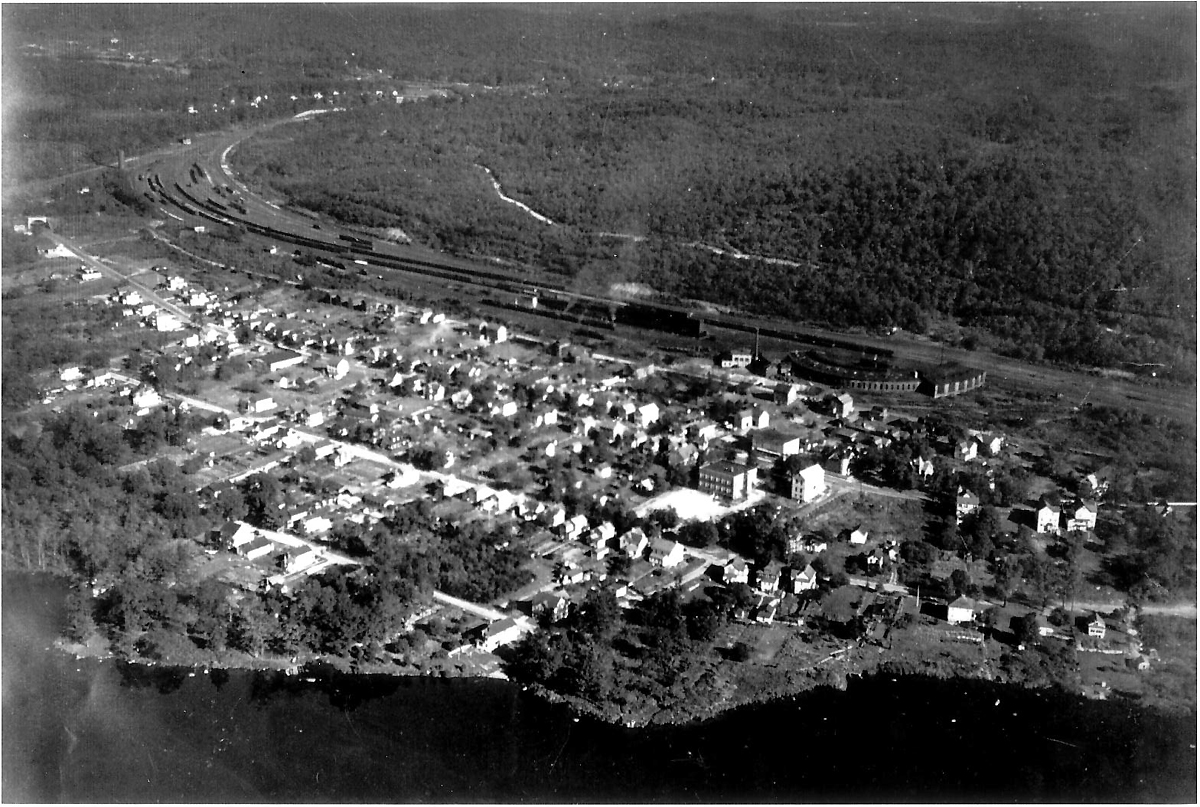
An aerial view of Port
Morris, circa
1938-1950. Clearly visible at center right is the Railroad Train
Roundhouse.
Lake Musconetcong is at the bottom. Netcong is just out of view to the
right,
Landing is at the top left of photo.
JUST ADDED IN 2018 - NEW SCANS FROM SAL VALENTINO:
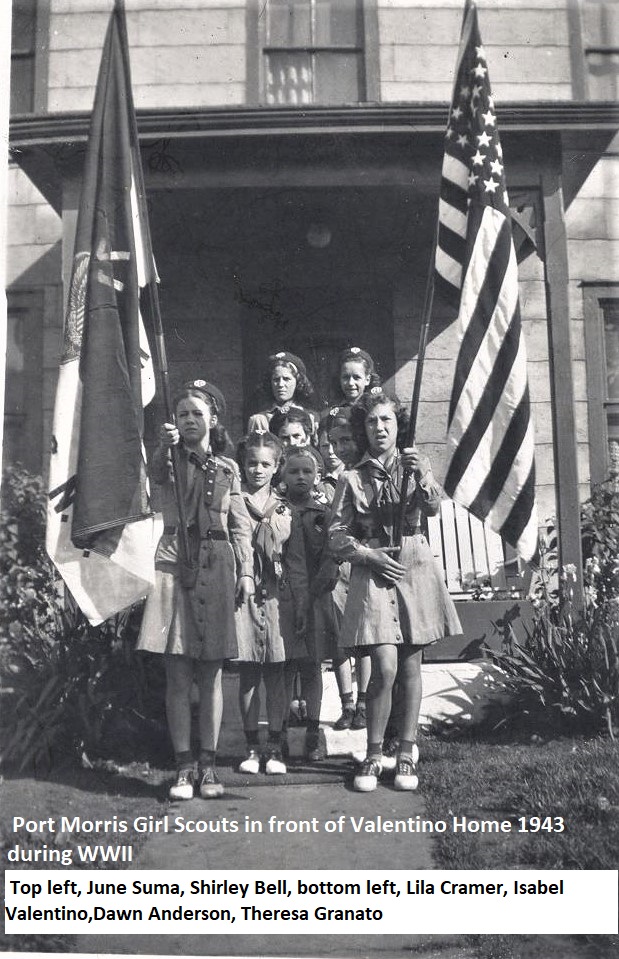 |
Yes, Budd Lake had a small private airport
Girl
Scouts rally during World War II, |
-
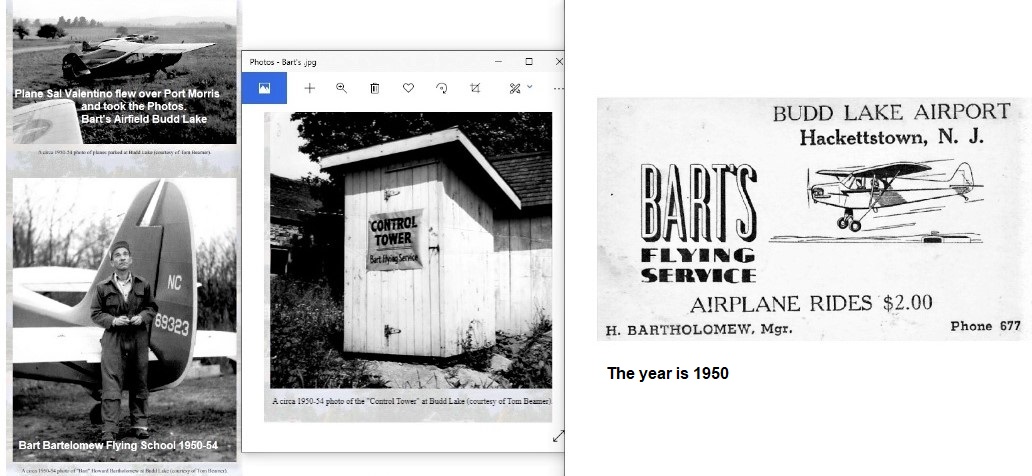
-
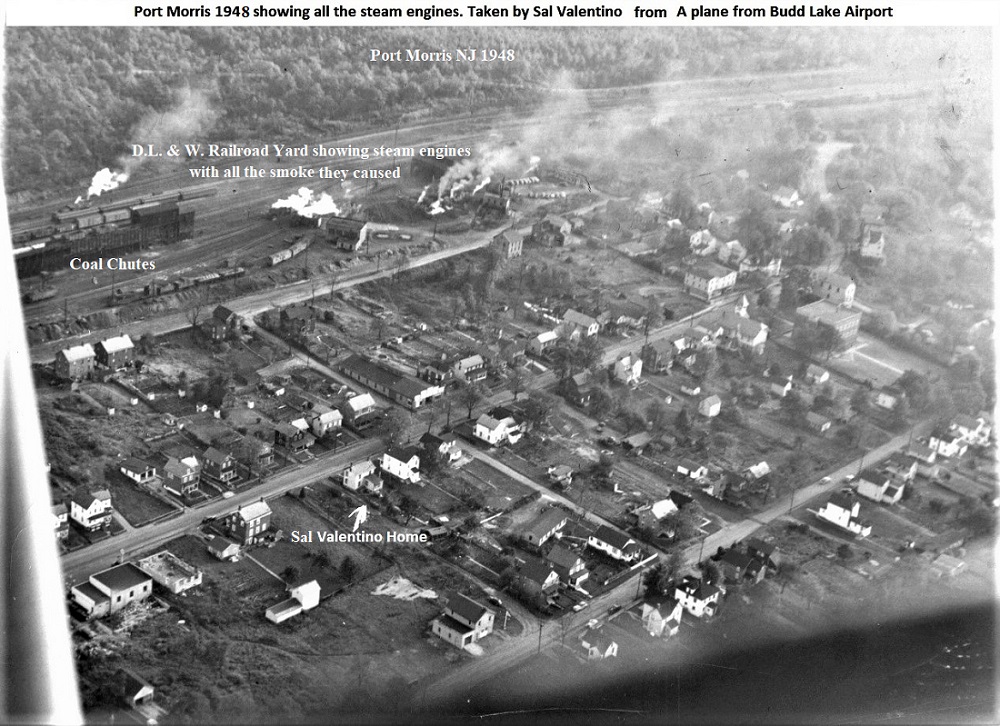
-
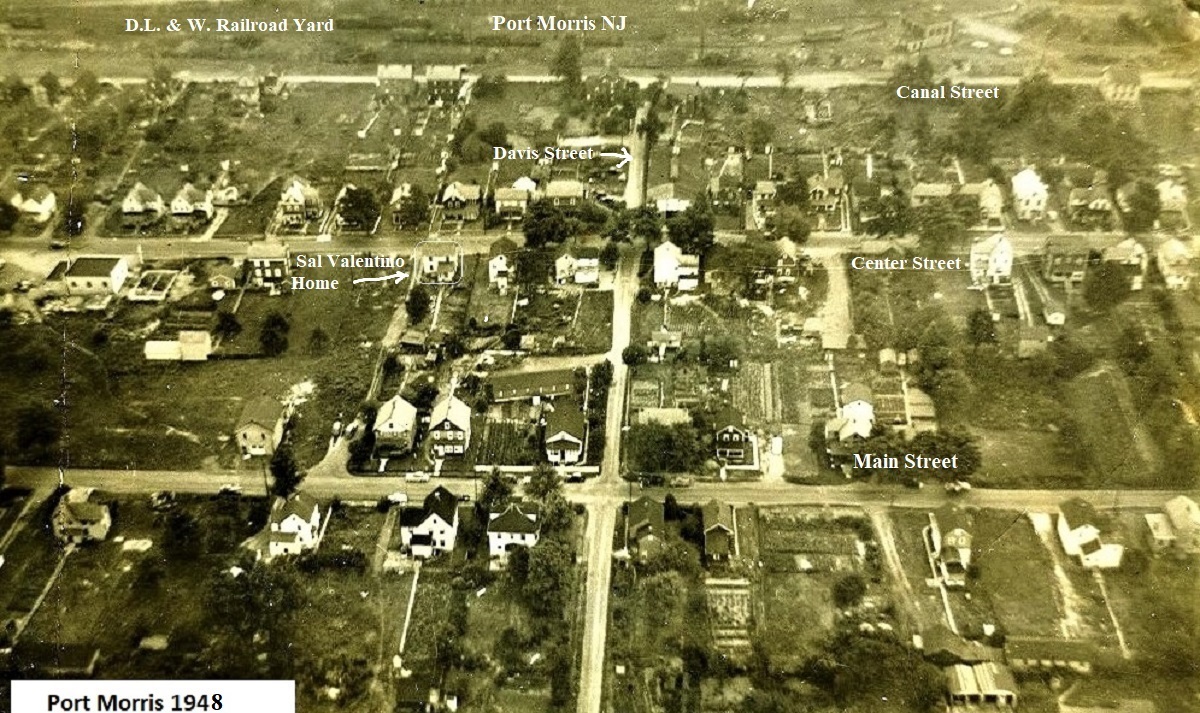
Editing & Page Design by the Website Editor - View our Main Port Morris History Page
|
Thank
you all for the following comments you sent about the
Living History of Port Morris I wrote. Thought I'd share
them with everyone. Dear Sal, That's good
that you can share your memories with your neighbors. It
sounds that you, like me, remember all the old times more
than yesterday. Maybe its because those were the best
times. Not that we didn't have to struggle, but times were
so much simpler then. |
This page can only begin
to cover the rich history of the Landing/Port Morris area. While this
page is an
independent effort, we recommend a visit to
The
Lake
Hopatcong Historical Museum
at the State Park,
open Sunday afternoons in the Spring and Fall.
Click here
to
Return to main page
-
This page is a voluntary service of LandingNewJersey.com, a privately
owned
website.